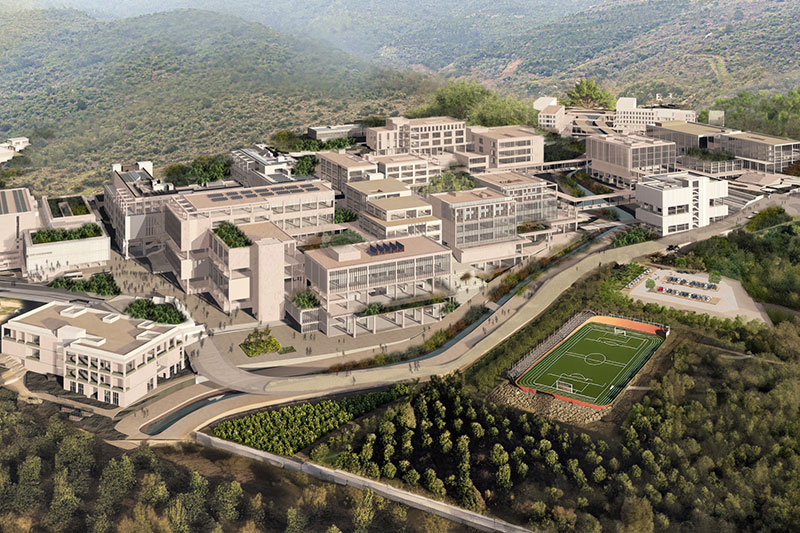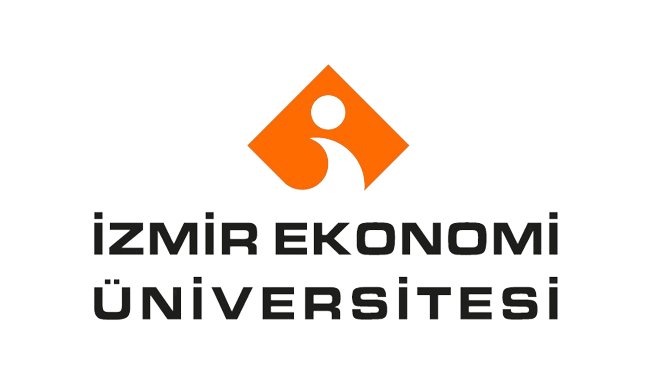ME 203 | Ders Tanıtım Bilgileri
| Dersin Adı |
Engineering Drawing
|
|
Kodu
|
Yarıyıl
|
Teori
(saat/hafta) |
Uygulama/Lab
(saat/hafta) |
Yerel Kredi
|
AKTS
|
|
ME 203
|
FALL
|
1
|
4
|
3
|
5
|
| Ön-Koşul(lar) | Yok | |||||
| Dersin Dili | English | |||||
| Dersin Türü | Zorunlu | |||||
| Dersin Düzeyi | Lisans | |||||
| Dersin Veriliş Şekli | Face to face | |||||
| Dersin Öğretim Yöntem ve Teknikleri |
Problem Solving Application: Experiment / Laboratory / Workshop Lecture / Presentation |
|||||
| Ulusal Meslek Sınıflandırma Kodu | - | |||||
| Dersin Koordinatörü |
|
|||||
| Öğretim Eleman(lar)ı |
|
|||||
| Yardımcı(ları) |
|
|||||
| Dersin Amacı | The aim of this course is to teach the student the basic principles of engineering drawing and graphical communication rules in engineering by means of a computer software. | |||||||||||||||||||||||||||||||||||||||||||||||||||||||||||||
| Öğrenme Çıktıları |
Bu dersi başarıyla tamamlayabilen öğrenciler;
|
|||||||||||||||||||||||||||||||||||||||||||||||||||||||||||||
| Ders Tanımı | In this course, 2D Drawing Techniques, 3D Solid Modeling, Orthographic Projection, Sectioning Principles, Assembly of Machine Elements, Dimensioning, Tolerances, Creating Manufacturing Drawings from 3D Models are explained with Solidworks program. | |||||||||||||||||||||||||||||||||||||||||||||||||||||||||||||
| Dersin İlişkili Olduğu Sürdürülebilir Kalkınma Amaçları |
-
|
|||||||||||||||||||||||||||||||||||||||||||||||||||||||||||||
|
|
Temel Ders |
X
|
| Uzmanlık/Alan Dersleri |
|
|
| Destek Dersleri |
|
|
| İletişim ve Yönetim Becerileri Dersleri |
|
|
| Aktarılabilir Beceri Dersleri |
|
HAFTALIK KONULAR VE İLGİLİ ÖN HAZIRLIK ÇALIŞMALARI
| Hafta | Konular | Ön Hazırlık | Öğrenme Çıktısı |
| 1 | Introduction to CAD and 2D Drawing Techniques | Chapter 1 Engineering Design and Graphics with Solidworks 2019 by James D. Bethune | LO1 |
| 2 | 2D Drawing Techniques | Chapter 2 Engineering Design and Graphics with Solidworks 2019 by James D. Bethune | LO2 |
| 3 | 2D Drawing Techniques | Chapter 2 Engineering Design and Graphics with Solidworks 2019 by James D. Bethune | LO2 |
| 4 | 3D Solid Modeling | Chapter 3 Engineering Design and Graphics with Solidworks 2019 by James D. Bethune | LO3 |
| 5 | 3D Solid Modeling | Chapter 3 Engineering Design and Graphics with Solidworks 2019 by James D. Bethune | LO3 |
| 6 | 3D Solid Modeling | Chapter 3 Engineering Design and Graphics with Solidworks 2019 by James D. Bethune | LO3 |
| 7 | Orthographic Projection | Chapter 4 Engineering Design and Graphics with Solidworks 2019 by James D. Bethune | LO4 |
| 8 | Midterm Exam | - | |
| 9 | Sectioning Principles | Chapter 4 Engineering Design and Graphics with Solidworks 2019 by James D. Bethune | LO4 |
| 10 | Assembly of Machine Elements | Chapter 5 Engineering Design and Graphics with Solidworks 2019 by James D. Bethune | LO6 |
| 11 | Assembly of Machine Elements | Chapter 5 Engineering Design and Graphics with Solidworks 2019 by James D. Bethune | LO6 |
| 12 | Dimensioning | Chapter 7 Engineering Design and Graphics with Solidworks 2019 by James D. Bethune | LO1 |
| 13 | Tolerances | Chapter 8 Engineering Design and Graphics with Solidworks 2019 by James D. Bethune | LO1 |
| 14 | Creating Working Drawings from a 3D Model | Chapter 13 Engineering Design and Graphics with Solidworks 2019 by James D. Bethune | LO5 |
| 15 | Review of the Semester | - | |
| 16 | Final Exam | - |
| Ders Kitabı | Engineering Design and Graphics with Solidworks 2019. 1. Baskı. James D. Bethune. ISBN-10: 013450769X. Pearson. |
| Önerilen Okumalar/Materyaller | - |
DEĞERLENDİRME ÖLÇÜTLERİ
| Yarıyıl Aktiviteleri | Sayı | Katkı Payı % | LO1 | LO2 | LO3 | LO4 | LO5 | LO6 |
| Ödev | 1 | 10 | X | X | ||||
| Proje | 1 | 10 | X | X | X | X | X | X |
| Ara Sınav | 1 | 30 | X | X | X | X | ||
| Final Sınavı | 1 | 50 | X | X | X | X | X | |
| Toplam | 4 | 100 |
AKTS / İŞ YÜKÜ TABLOSU
| Yarıyıl Aktiviteleri | Sayı | Süre (Saat) | İş Yükü |
|---|---|---|---|
| Katılım | - | - | - |
| Teorik Ders Saati | 16 | 1 | 16 |
| Laboratuvar / Uygulama Ders Saati | 16 | 4 | 64 |
| Sınıf Dışı Ders Çalışması | 14 | 2 | 28 |
| Arazi Çalışması | - | - | - |
| Küçük Sınav / Stüdyo Kritiği | - | - | - |
| Portfolyo | - | - | - |
| Ödev | - | - | - |
| Sunum / Jüri Önünde Sunum | - | - | - |
| Proje | 1 | 12 | 12 |
| Seminer/Çalıştay | - | - | - |
| Sözlü Sınav | - | - | - |
| Ara Sınavlar | 1 | 15 | 15 |
| Final Sınavı | 1 | 15 | 15 |
| Toplam | 150 |
DERSİN ÖĞRENME ÇIKTILARININ PROGRAM YETERLİLİKLERİ İLE İLİŞKİSİ
| # | PC Alt | Program Yeterlilikleri / Çıktıları | * Katkı Düzeyi | ||||
| 1 | 2 | 3 | 4 | 5 | |||
| 1 |
Engineering Knowledge: Knowledge of mathematics, science, basic engineering, computation, and related engineering discipline-specific topics; the ability to apply this knowledge to solve complex engineering problems. |
||||||
| 1 |
Mathematics |
||||||
| 2 |
Science |
||||||
| 3 |
Basic Engineering |
LO1 | |||||
| 4 |
Computation |
||||||
| 5 |
Related engineering discipline-specific topics |
LO2 LO3 | |||||
| 6 |
The ability to apply this knowledge to solve complex engineering problems |
||||||
| 2 |
Problem Analysis: Ability to identify, formulate and analyze complex engineering problems using basic knowledge of science, mathematics and engineering, and considering the UN Sustainable Development Goals relevant to the problem being addressed. |
||||||
| 3 |
Engineering Design: The ability to devise creative solutions to complex engineering problems; the ability to design complex systems, processes, devices or products to meet current and future needs, considering realistic constraints and conditions. |
||||||
| 1 |
Ability to design creative solutions to complex engineering problems |
||||||
| 2 |
Ability to design complex systems, processes, devices or products to meet current and future needs, considering realistic constraints and conditions |
LO5 LO6 | |||||
| 4 |
Use of Techniques and Tools: Ability to select and use appropriate techniques, resources, and modern engineering and computing tools, including estimation and modeling, for the analysis and solution of complex engineering problems, while recognizing their limitations. |
LO4 | |||||
| 5 |
Research and Investigation: Ability to use research methods to investigate complex engineering problems, including literature research, designing and conducting experiments, collecting data, and analyzing and interpreting results. |
||||||
| 1 |
Literature research for the study of complex engineering problems |
||||||
| 2 |
Designing experiments |
||||||
| 3 |
Ability to use research methods, including conducting experiments, collecting data. analyzing and interpreting results |
||||||
| 6 |
Global Impact of Engineering Practices: Knowledge of the impacts of engineering practices on society, health and safety, economy, sustainability, and the environment, within the context of the UN Sustainable Development Goals; awareness of the legal implications of engineering solutions. |
||||||
| 1 |
Knowledge of the impacts of engineering practices on society, health and safety, economy, sustainability, and the environment, within the context of the UN Sustainable Development Goals |
||||||
| 2 |
Awareness of the legal implications of engineering solutions |
||||||
| 7 |
Ethical Behavior: Acting in accordance with the principles of the engineering profession, knowledge about ethical responsibility; awareness of being impartial, without discrimination, and being inclusive of diversity. |
||||||
| 1 |
Acting in accordance with the principles of the engineering profession, knowledge about ethical responsibility ethical responsibility |
||||||
| 2 |
Awareness of being impartial and inclusive of diversity, without discriminating on any subject |
||||||
| 8 |
Individual and Teamwork: Ability to work effectively, individually and as a team member or leader on interdisciplinary and multidisciplinary teams (face-to-face, remote or hybrid). |
||||||
| 1 |
Ability to work individually and within the discipline |
||||||
| 2 |
Ability to work effectively as a team member or leader in multidisciplinary teams (face-to-face, remote or hybrid) |
||||||
| 9 |
Verbal and Written Communication: Taking into account the various differences of the target audience (such as education, language, profession) on technical issues. |
||||||
| 1 |
Ability to communicate verbally |
||||||
| 2 |
Ability to communicate effectively in writing |
||||||
| 10 |
Project Management: Knowledge of business practices such as project management and economic feasibility analysis; awareness of entrepreneurship and innovation. |
||||||
| 1 |
Knowledge of business practices such as project management and economic feasibility analysis |
||||||
| 2 |
Awareness of entrepreneurship and innovation |
||||||
| 11 |
Lifelong Learning: Lifelong learning skills that include being able to learn independently and continuously, adapting to new and developing technologies, and thinking questioningly about technological changes. |
||||||
*1 Lowest, 2 Low, 3 Average, 4 High, 5 Highest

İZMİR EKONOMİ ÜNİVERSİTESİ GÜZELBAHÇE KAMPÜSÜ
DetaylarKÜRESEL KARİYER
İzmir Ekonomi Üniversitesi, dünya çapında bir üniversiteye dönüşürken aynı zamanda küresel çapta yetkinliğe sahip başarılı gençler yetiştirir.
Daha Fazlası..BİLİME KATKI
İzmir Ekonomi Üniversitesi, nitelikli bilgi ve yetkin teknolojiler üretir.
Daha Fazlası..İNSANA DEĞER
İzmir Ekonomi Üniversitesi, toplumsal fayda üretmeyi varlık nedeni olarak görür.
Daha Fazlası..


